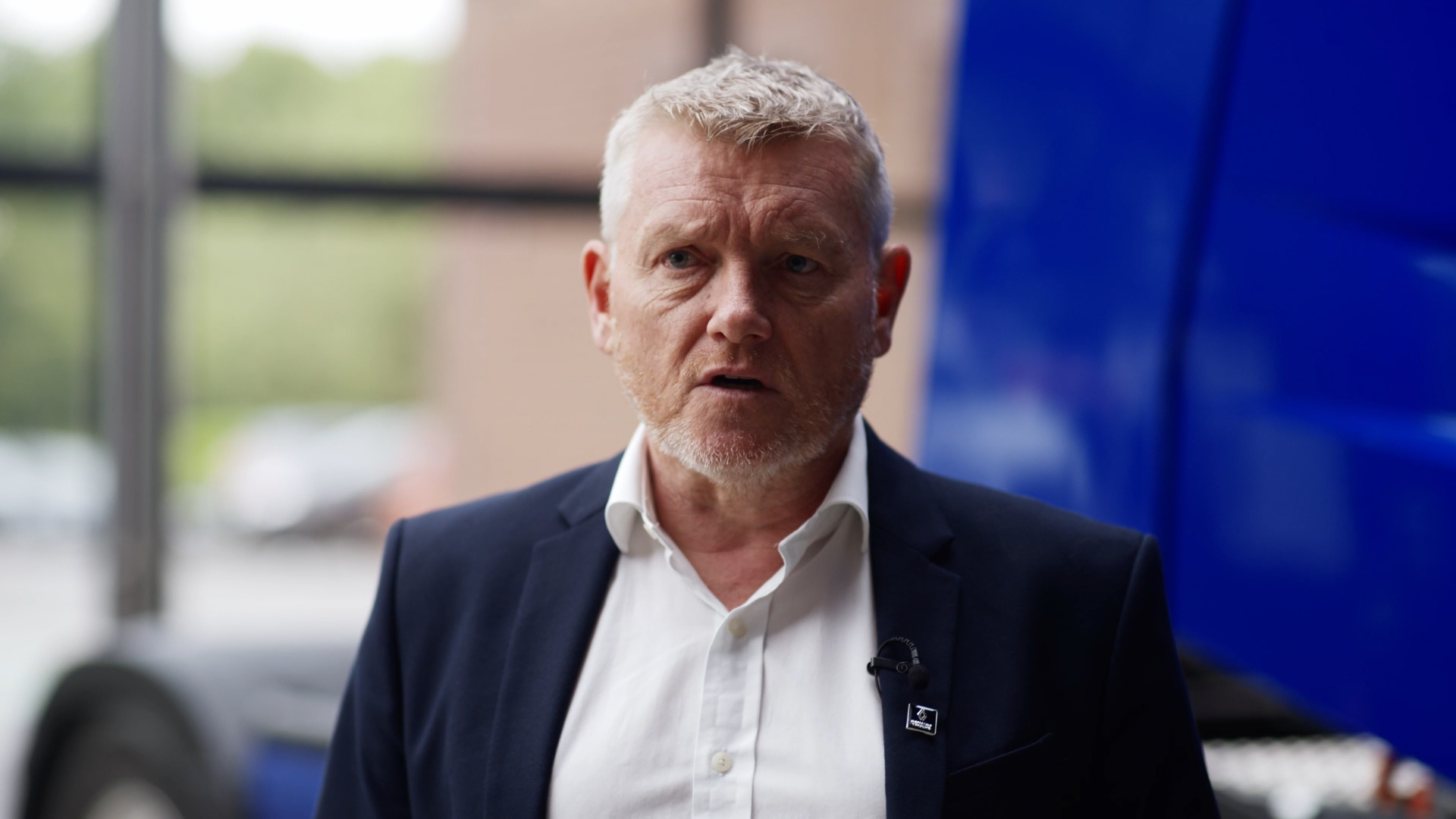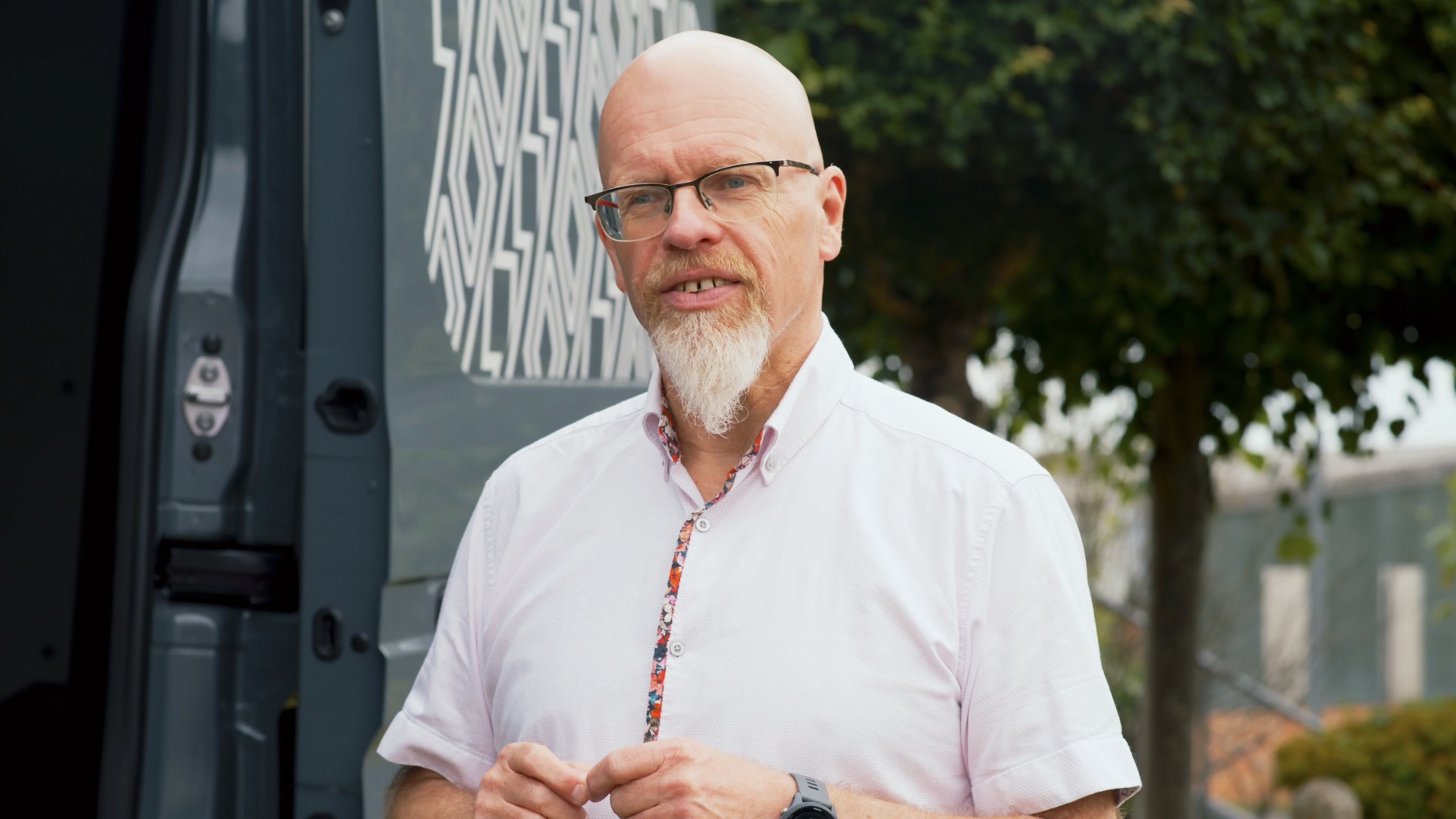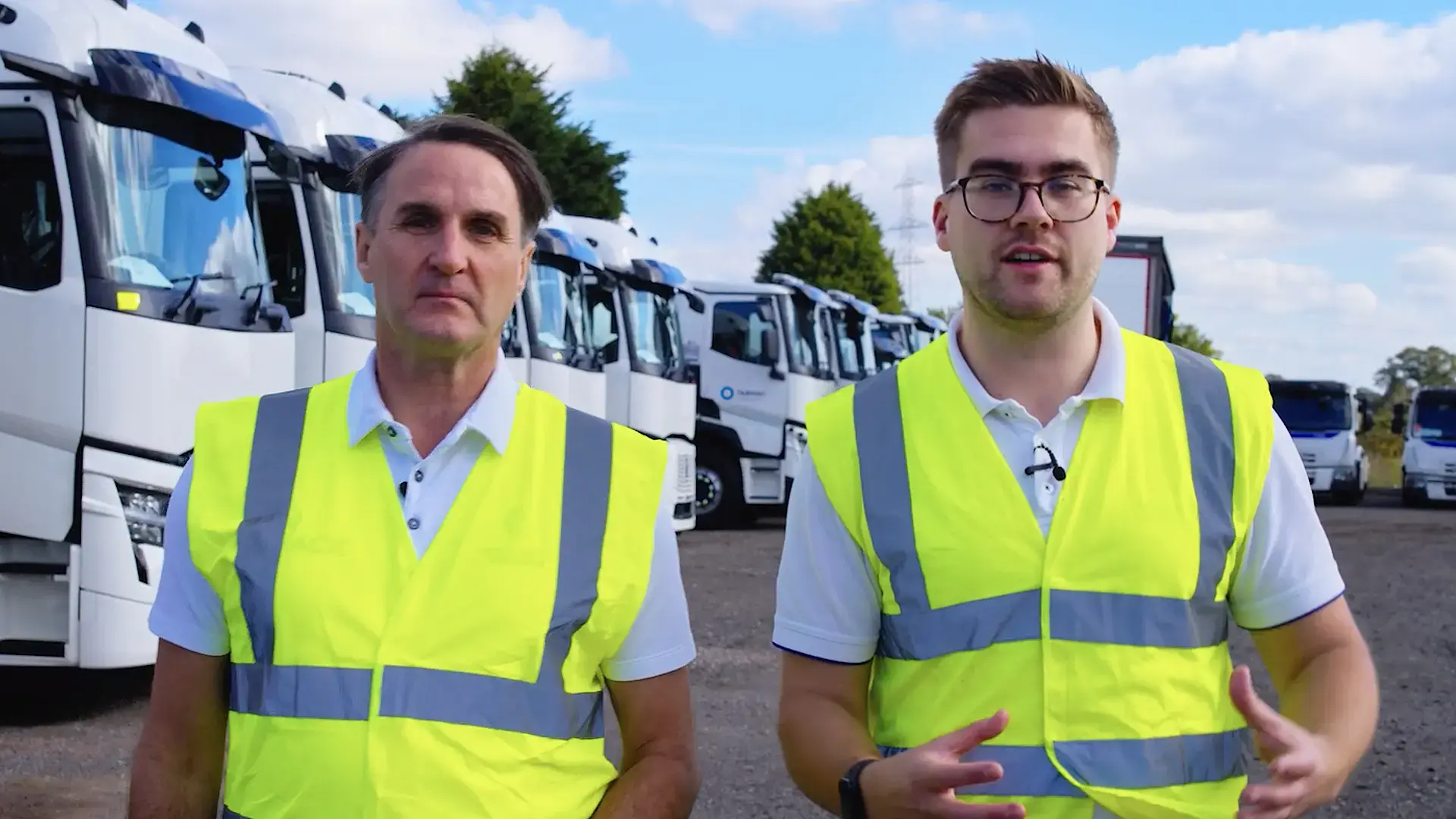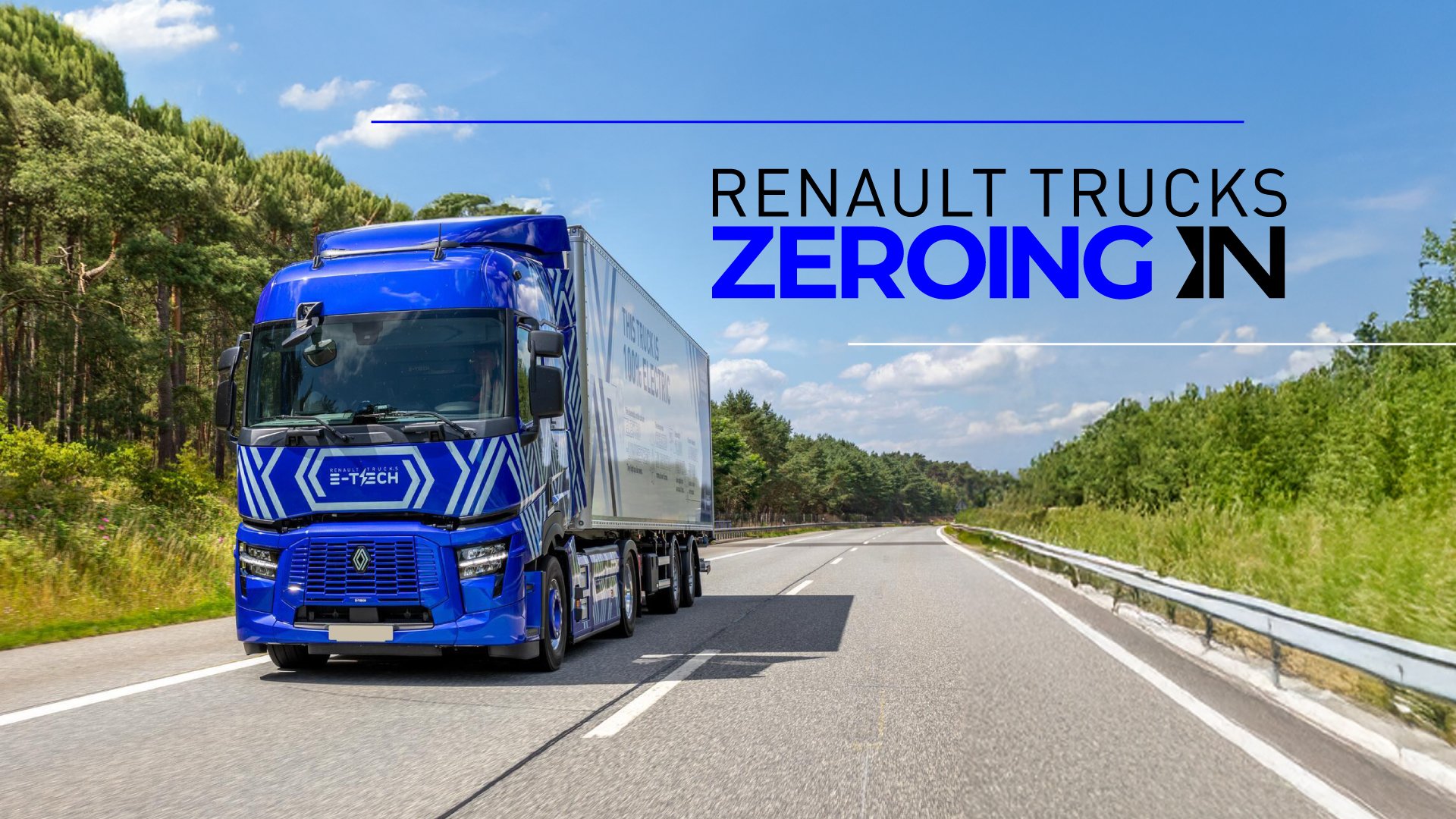
Learn about the Energy Transition Journey
Learn about the Energy Transition Journey
Is There Enough Power for EV Charging Infrastructure? Mapping the Grid
When fleet operators begin exploring electric HGVs, one question comes up time and again: “Is there enough electricity for all these trucks?” It’s a fair question, and one that Renault Trucks’ Electromobility Transition Managers, Jack Millington and Simon Calado, answer in this episode of Zeroing In. The short answer is yes; there is enough power. The UK grid can support EV charging infrastructure today, and it’s getting stronger every year. But the real challenge lies in understanding how that power gets to your depot, and what it means for your routes, charging strategy, and electrification plans.
Understanding the Journey of Electricity
Every kilowatt powering an electric truck follows a mapped route, from generation, through transmission, into distribution, and finally to the depot connection. Jack and Simon take us on that journey, breaking down how energy flows across the UK’s grid and what operators need to know when planning their EV charging infrastructure.
Generation – Where Power Begins
The journey starts with generation: where electricity is created. Across the UK, energy comes from a blend of renewable and non-renewable sources:
- Renewables: solar, wind, hydro, and bioenergy
- Non-renewables: gas and nuclear
Renewables are now a major part of the UK’s power mix, providing cleaner, greener, and increasingly cost-effective energy. When the sun isn’t shining or the wind drops, non-renewables step in to maintain supply. The grid is changing rapidly. By 2035, the UK aims to be fully decarbonised, powered primarily by renewables and supported by upgraded transmission infrastructure.
For fleet operators, that means every year the electricity charging your HGVs becomes cleaner, helping reduce the total lifecycle emissions of your transport operations.
Transmission – The Motorway of the Grid
Once generated, electricity travels onto the transmission network: the high voltage “motorway” of the UK grid.
Huge pylons and substations carry electricity across the country from where it’s produced to where it’s needed. At the same time, the Electricity System Operator (ESO) continually balances supply and demand in real time.
Whether you’re plugging in a kettle or charging an electric truck, the same national network ensures reliable, around-the-clock delivery of power across Great Britain.
The challenge isn’t whether enough energy exists, it’s about understanding how that power moves through the grid and reaches your site.
Distribution and Depot Connections – From Grid to Ground
After transmission, electricity moves into the distribution network, the lower-voltage system that connects directly to homes, businesses, and depots. This is where the Distribution Network Operator (DNO) comes in. Your DNO manages the regional network infrastructure and determines how much power can be supplied to your site.
In some cases, you may work with an Independent Distribution Network Operator (IDNO), these serve specific developments or new sites but function in the same way.
When planning depot charging for electric HGVs, operators should:
- Assess existing site capacity — how much KVA is currently available
- Engage early with the DNO — to understand connection timelines and upgrade requirements
- Plan for scalability — ensuring infrastructure can grow as more vehicles are electrified
By knowing who manages each stage of the grid and how electricity reaches your depot, you can make informed decisions that future-proof your EV charging infrastructure.
The Roadmap to Electrification
The UK grid already has the capacity to support fleet electrification, and that capacity is expanding every year as renewable generation and network upgrades accelerate.
The key is planning early and mapping the route from the grid to your depot. Understanding how electricity flows, who manages each stage, and what your site requires will ensure your transition to electric HGVs is both smooth and sustainable.
As Jack and Simon conclude: “The roadmap is clear. Now it’s about planning the best route for your operation.”
What’s Next: The Zeroing In Series
This episode of Zeroing In explores how the grid powers EV charging infrastructure — and why understanding that system is essential for fleet electrification. Future editions will look deeper into depot power planning, charging strategies, and the importance of partnerships for electric fleets.
With Renault Trucks, operators have a trusted partner guiding them through every step of the journey toward zero-emission transport.

More in our Zeroing In series
Getting Started
Electric trucks are here. What’s holding you back? Power, cost, complexity - or just knowing where to start? with Roger Clarke, Head of Electromobility
EV Efficiency
Challenge the assumption that bigger batteries are better with Grahame Neagus, LCV Manager.
Is There Enough Power for Electric Trucks?
How the grid handles it now, and how it’s building capacity with Energy Transition Managers, Jack Millington and Simon Calado.

How to Charge
Your Fleet
Exploring options from depot charging to shared hubs and public networks with Electric Mobility Charging Specialists, Andrew Roberts and Aaron Davison.
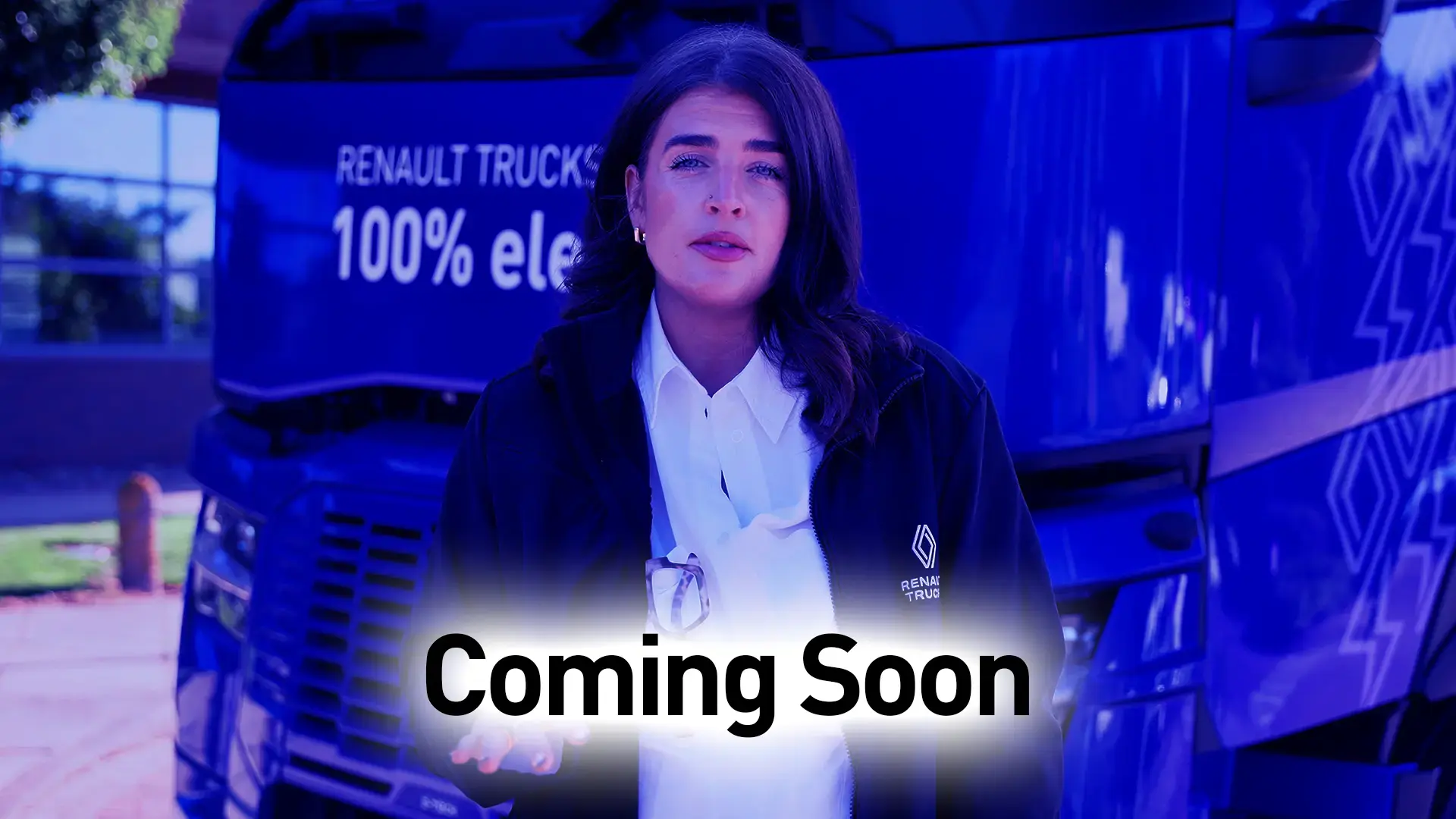
The Importance of Partnerships
Making the right choices that drive fleet decarbonisation and commercial success with Jessica Sawbridge, Electromobility Customer Experience Manager.
Make sure you subscribe to the Zeroing In email series for electromobility news and updates
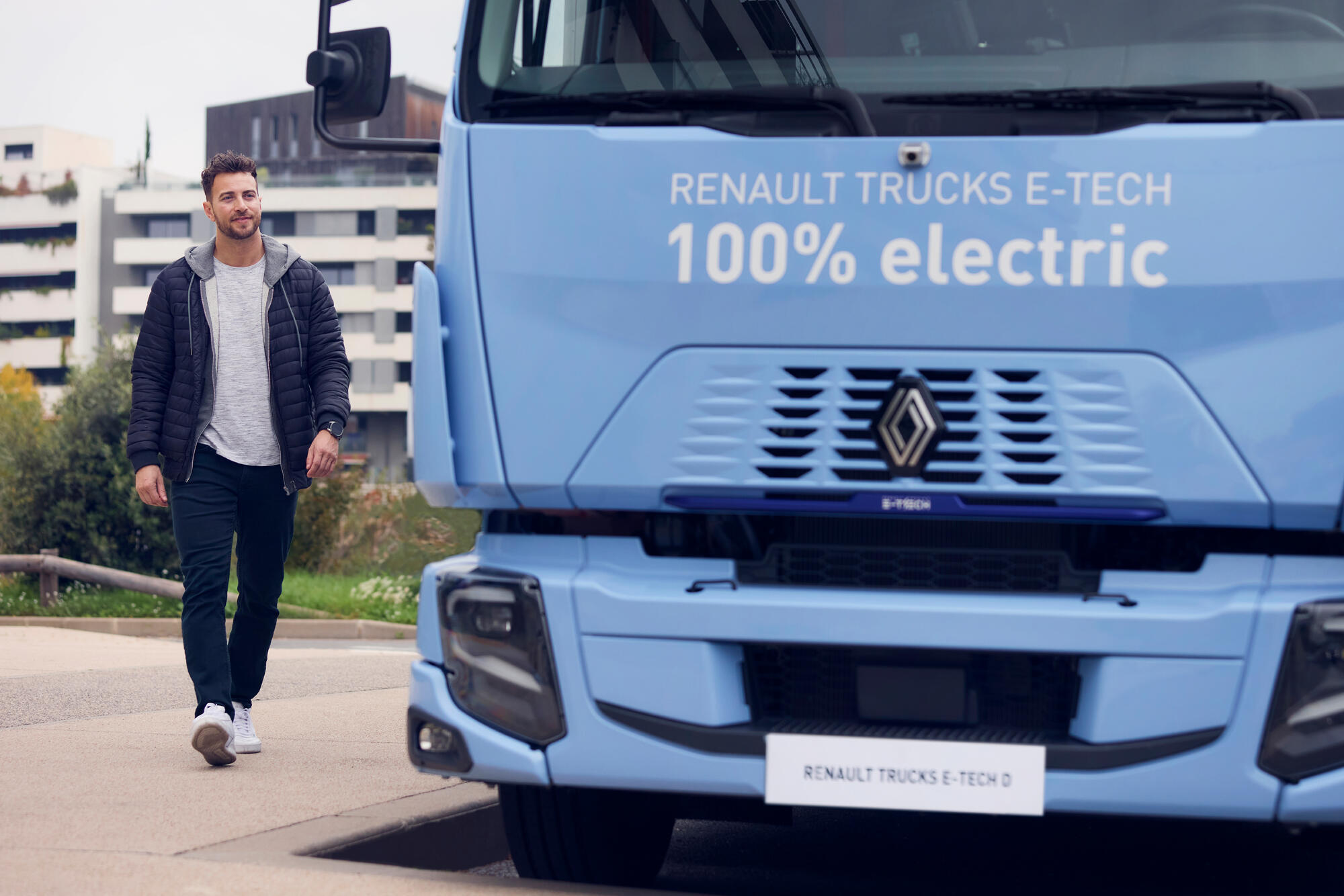
Download our White Paper to help your switch to electric run smoothly
We understand that the shift to electromobility is accelerating, so is the need for sharper, more credible conversation around it. Our Decarbonisation White Paper highlights the main points in the energy transition journey.
Get to know more!


